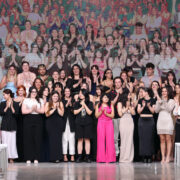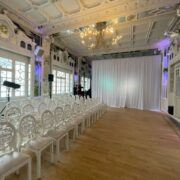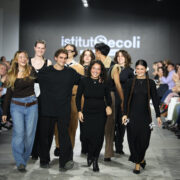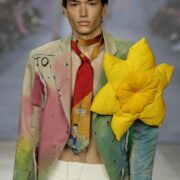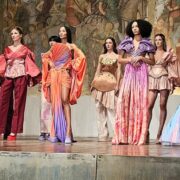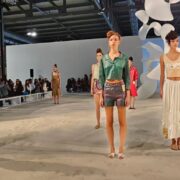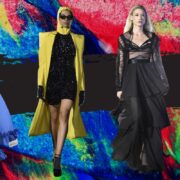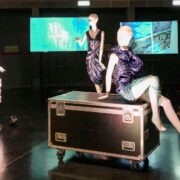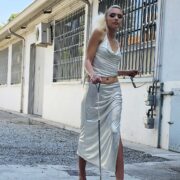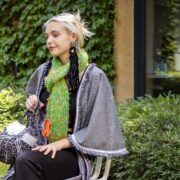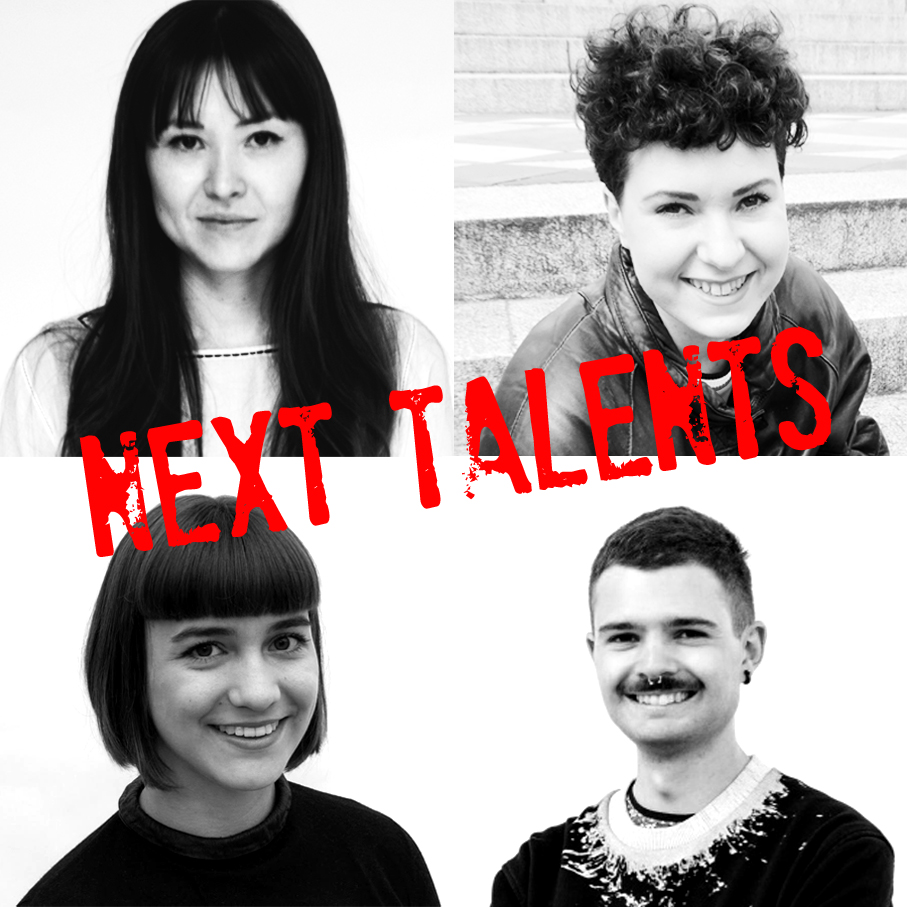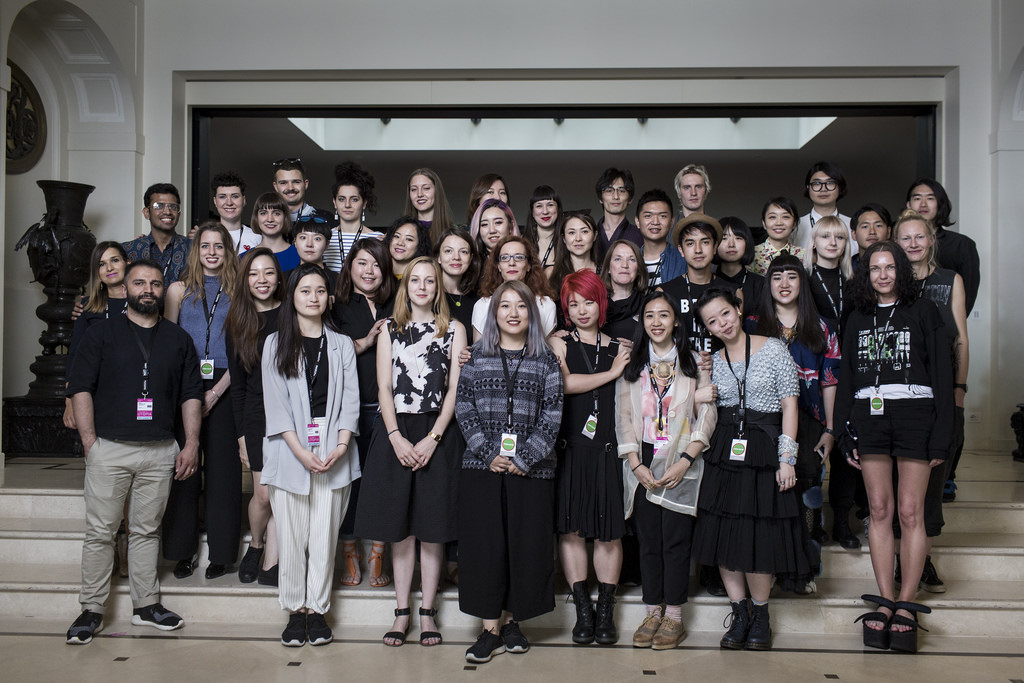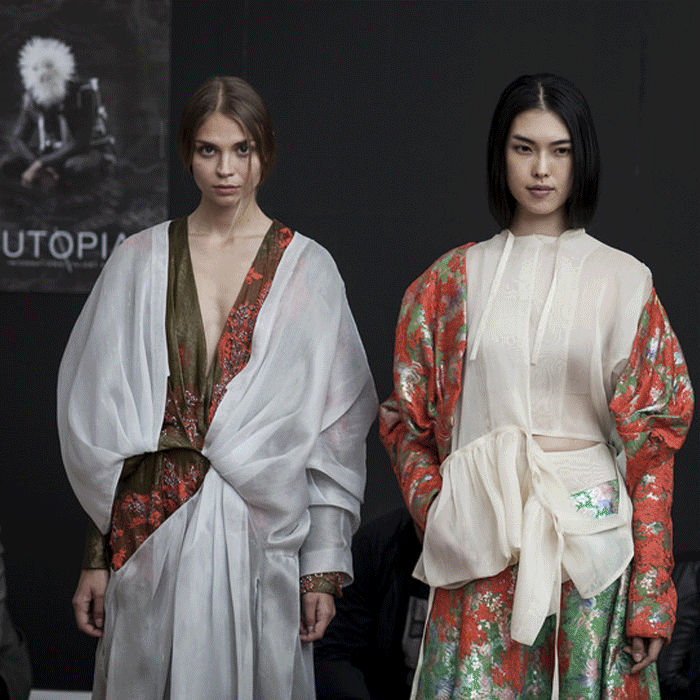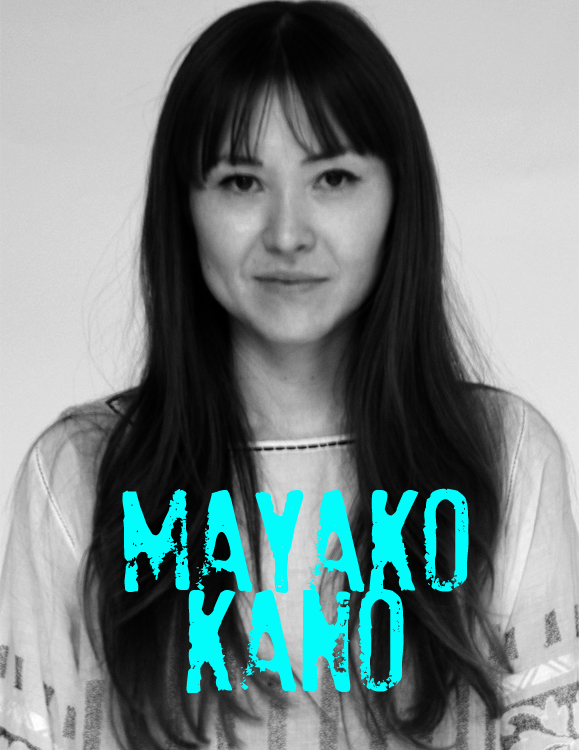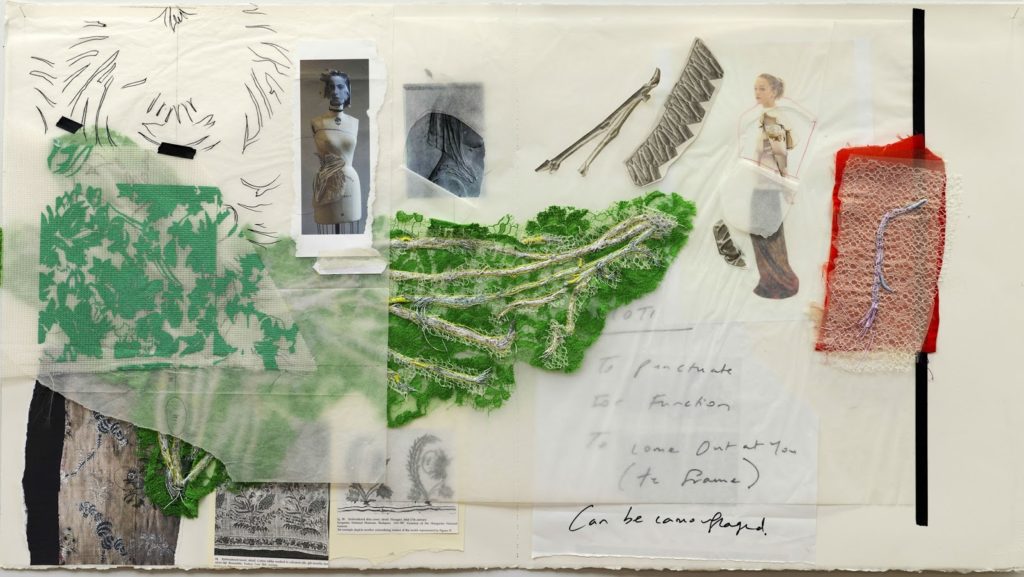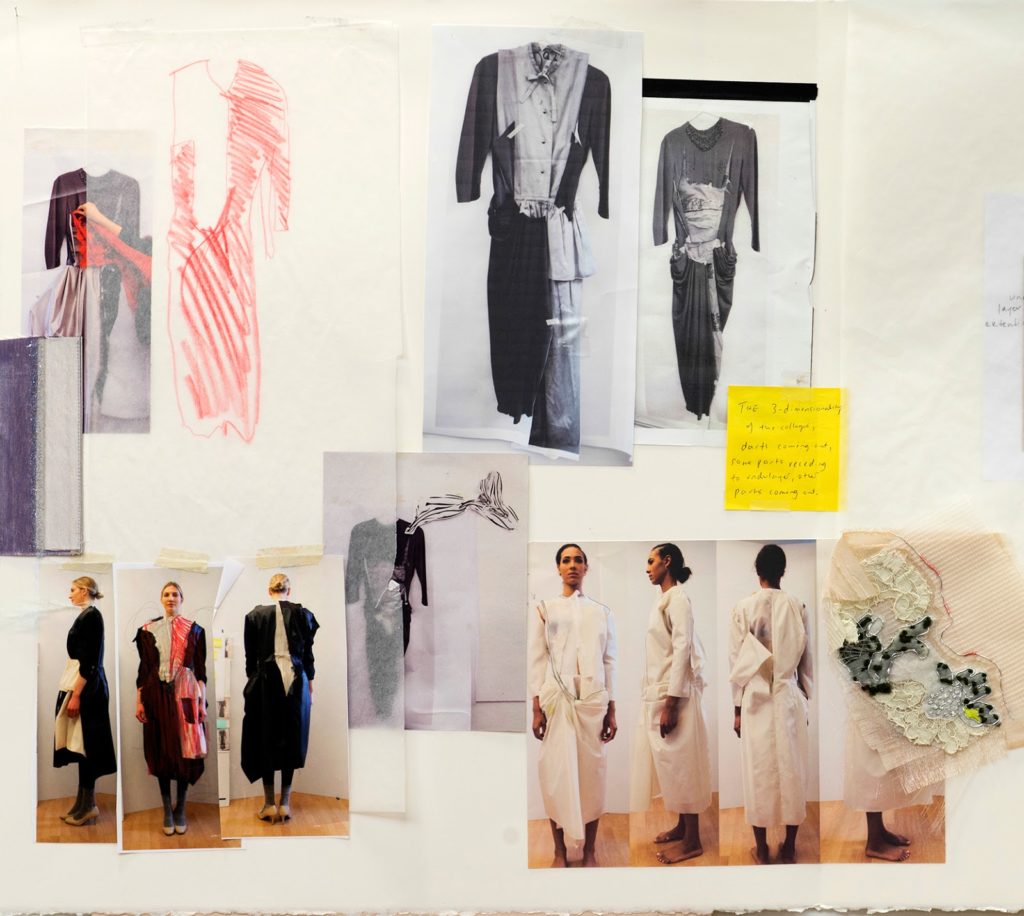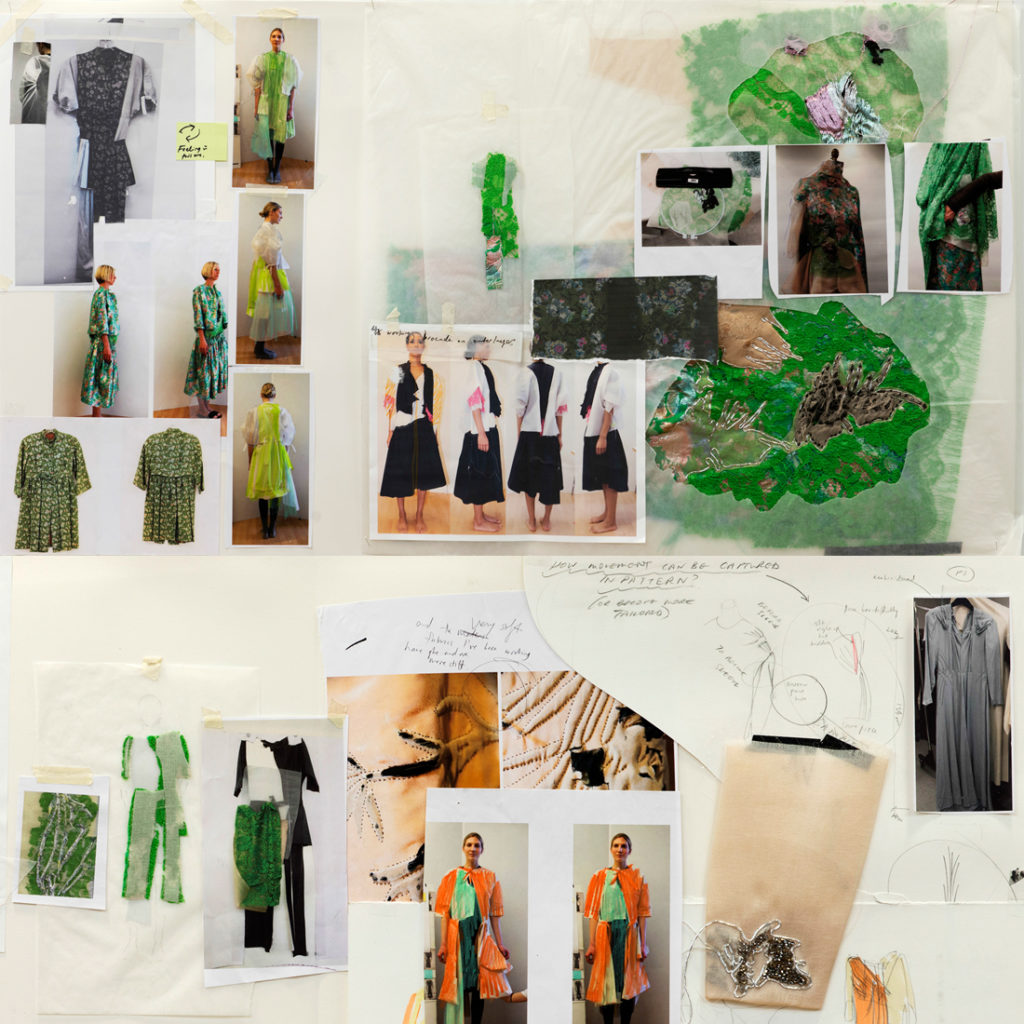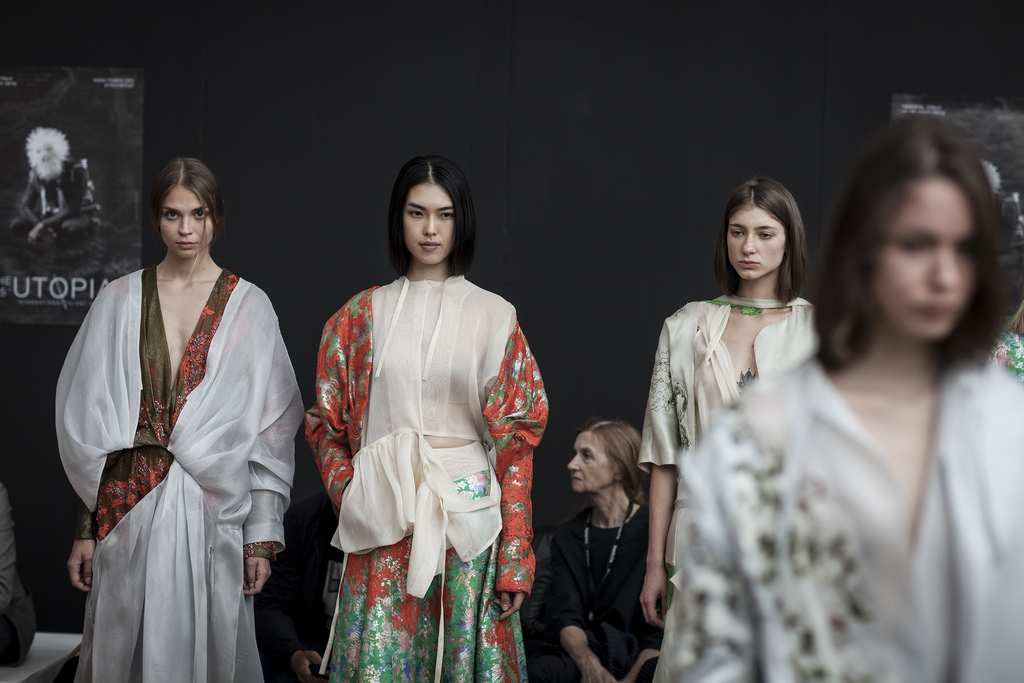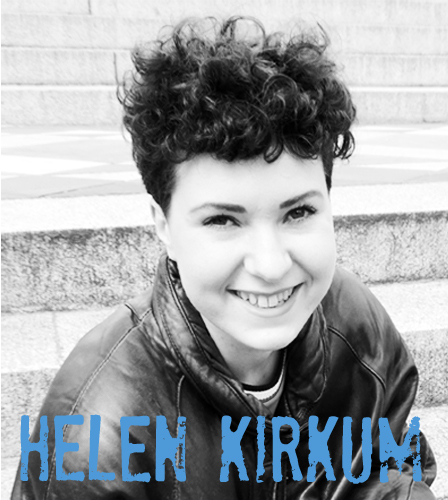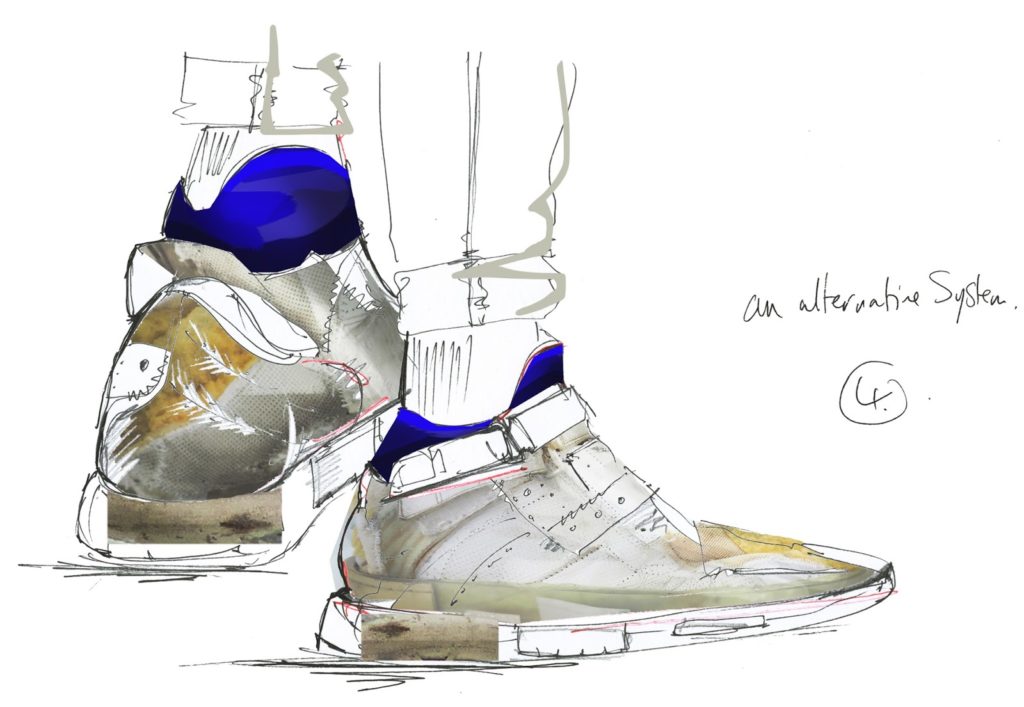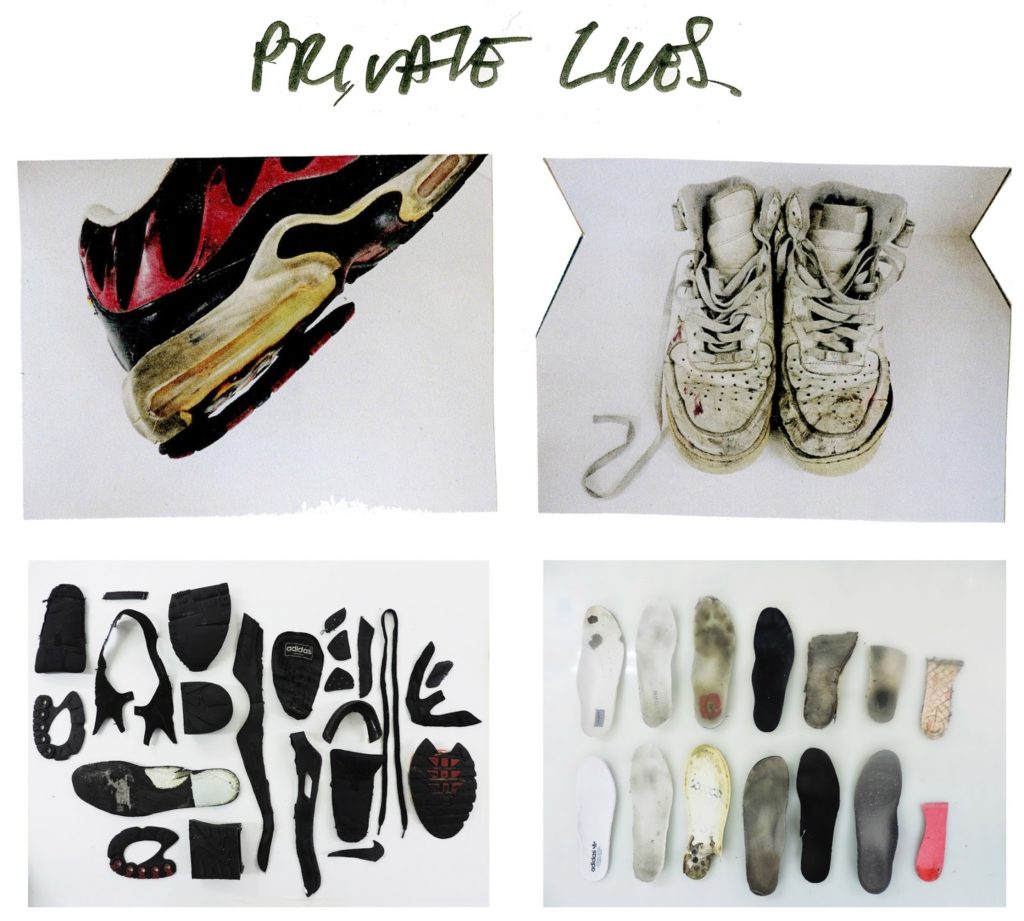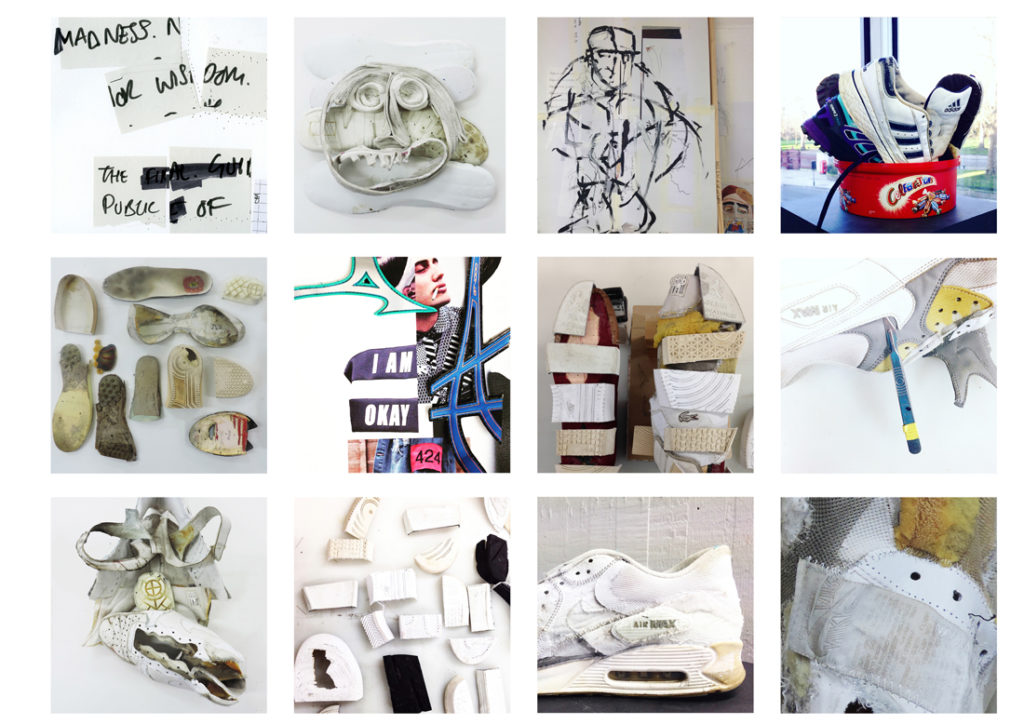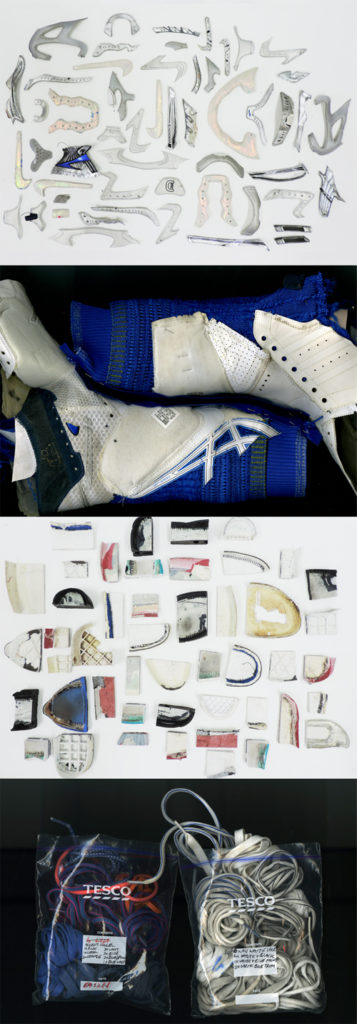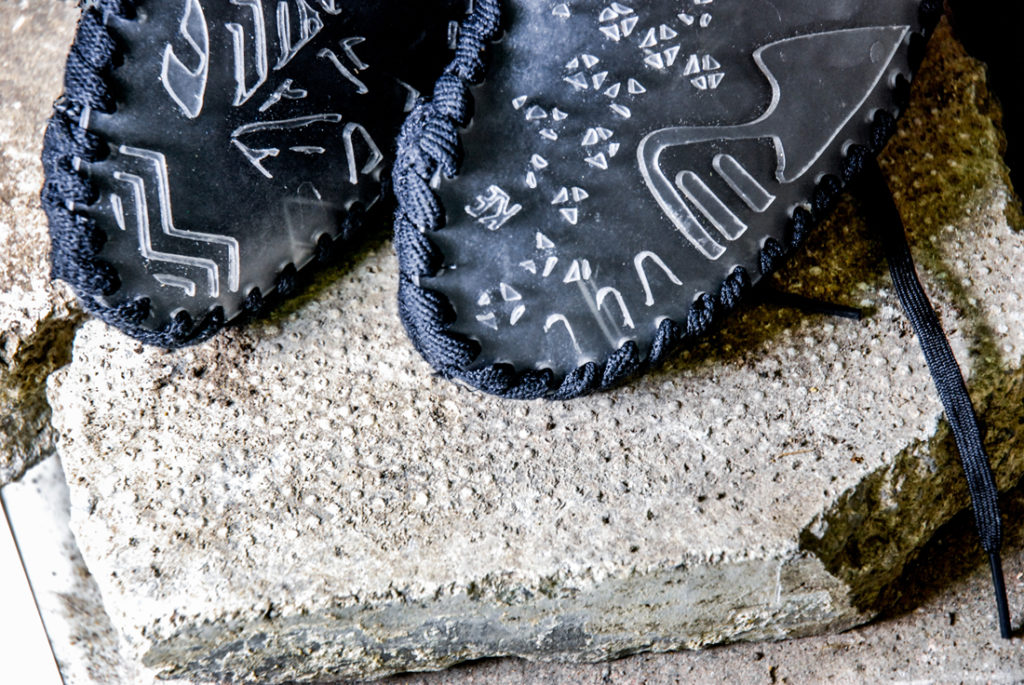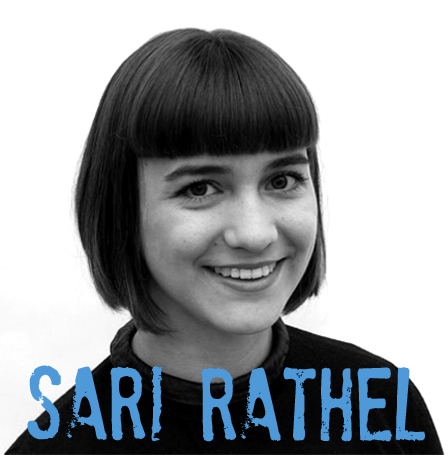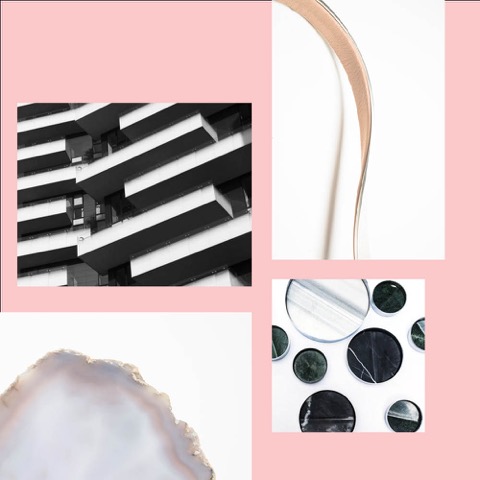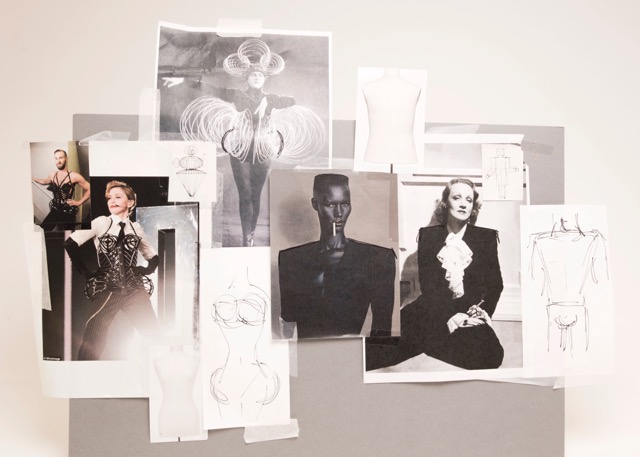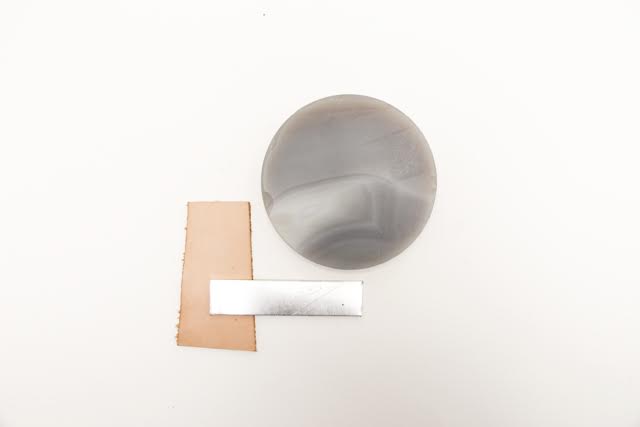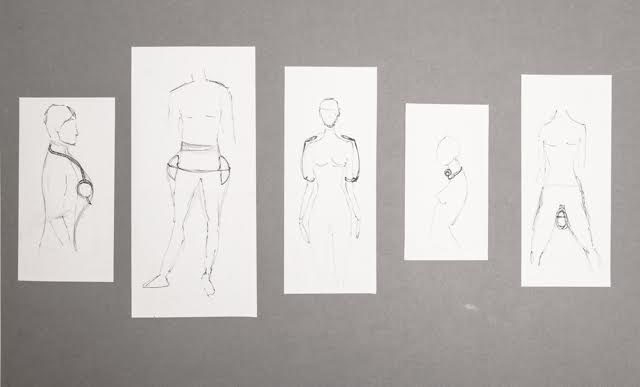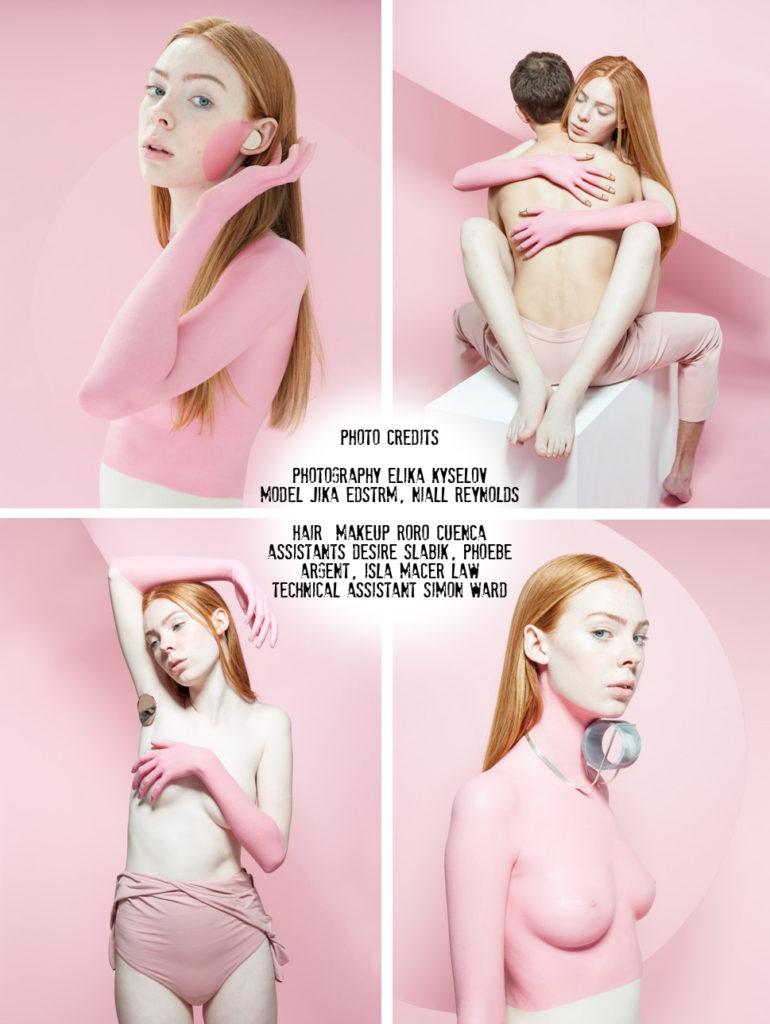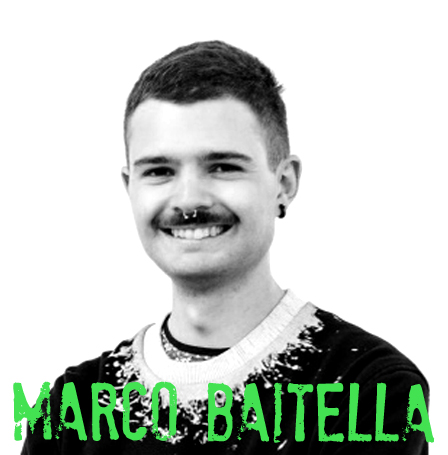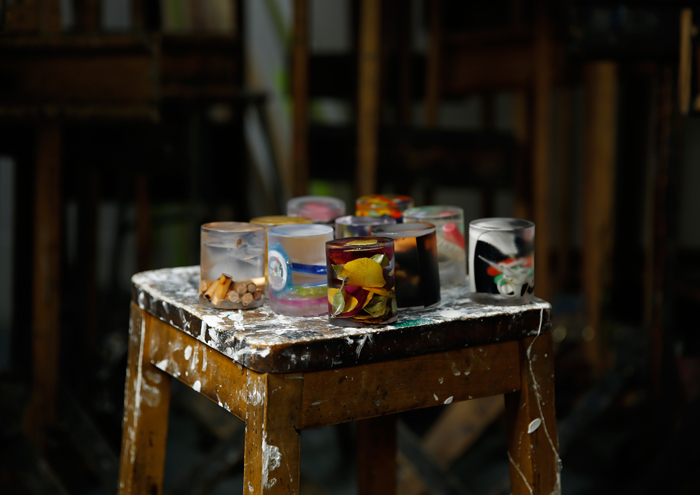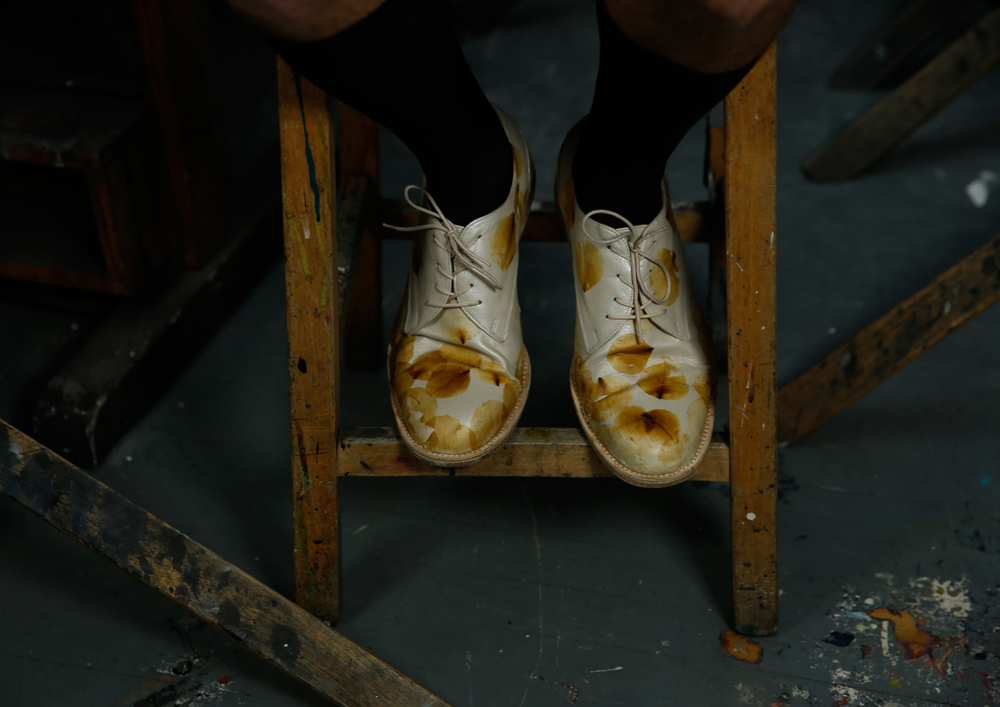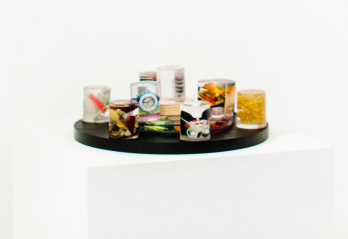They have tested their creativity, their projects have been selected from
nearly a thousand. Today we chat with the 4 winners in
the main categories of ITS Contest 2016.
leading fashion competitions worldwide. In its fifteenth edition, held in
Trieste on July 16th, was attended by 41 finalists (which you can meet here),
from almost 200 international schools or who already have their emerging brand.
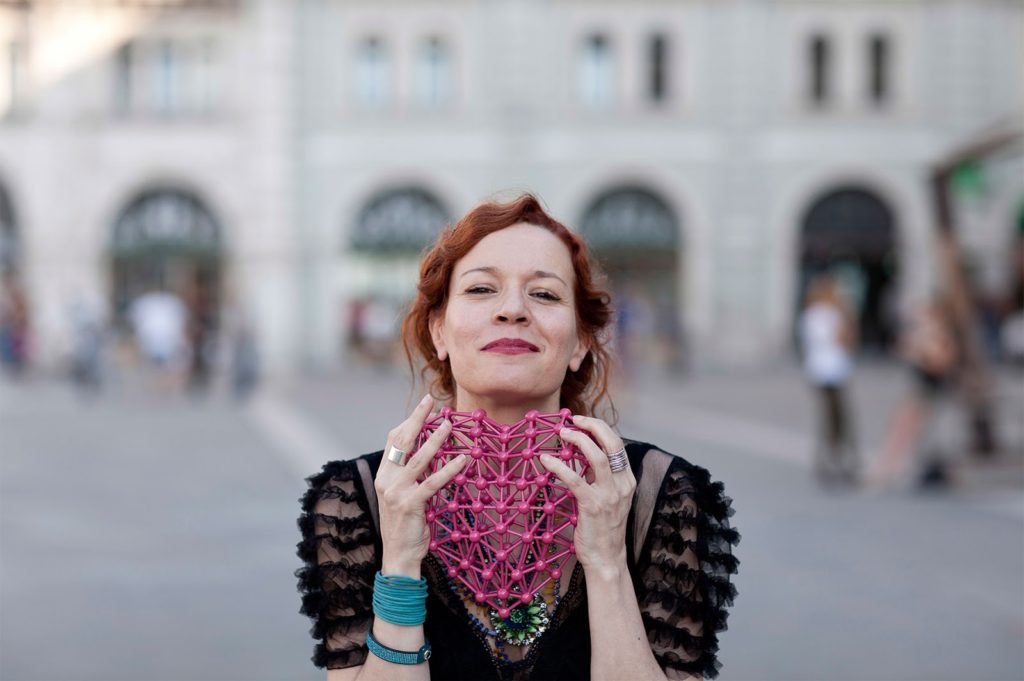 |
| BARBARA FRANCHIN |
As Barbara Franchin should say
(creator, mind and heart of the whole organization),
ITS is a family. The contest, in fact, has been conceived to showcase and support the purest
and free creativity of young fashion, accessories
and jewelry designers, without any constraint or
commercial purpose.
through their own clear and brave vision.
We talked with the 4 winners in the categories ITS Fashion, ITS Accessories,
ITS Jewelry and ITS Artwork, all young and
passionate guys, helpful
and friendly, to whom we have asked the same questions to learn more
about their educational background, the way of designing a collection and tackle
the work, their experience at ITS. We also
asked how they see their future. We are sure it will be
bright!
Zealand, is the winner of ITS Fashion Award with a collection dominated by lightness
and sophistication, full of creative ideas and
references to the past.
when faced with a deadline you have to find a way or make one: be proactive
with every project and don’t be afraid to ask for help/delegate
sleep at night I write an outline for the upcoming day in my journal. My
typical day involves communicating, directly and indirectly, with pattern
makers, cutters, and sewers.
collection embraced the idea of being caught in limbo between “old and
new” worlds. triggered by hand made objects from previous eras, I sought
to bring their qualities into a contemporary dialogue through preservation and
translucent layering.
How was the ITS experience and what are the opportunities for your future after winning the contest?
I’m still caught in the memory of ITS. for me,
it really was a dream come true. I’m interested in continuing the dialogue and
taking the award seriously. I long to be in an environment which allows me to
further explore my own aesthetic while working with/learning from finer
designers.
highly coveted Vogue Talent Award. Soon we will
see her creations, sneakers remastered from old shoes, on paper supplement of Vogue Italia and on the website of the publishing giant in a photo shoot
dedicated to her.
What’s the best lesson you’ve learned during your design school path?
throughout my years in design schools. I think the most valuable thing at
design schools is conversation. Through speaking to friends, peers and tutors,
I have learned how to describe and defend my practice, as well as invaluable
references and opinions that fuel my work. I think it is important to learn to
present your work and I cherish ever opportunity to practice.
lesson that has come from my journey is to trust my instinct. I have learned so
much about myself, my process and the way I work that I know how to push my
ideas as well as how to let them go. This lesson only came through years of
trial and error, through that process I feel I trust myself and am stronger now
as a designer.
At RCA (Royal College of Art) the days were long and busy, but it was a great
environment to live and work in. I usually get into the studio early and spend
most of the day planning and working. I am most productive in the evening and
often work solidly all evening and night. My class mates always laugh at me
when I get a burst of energy around 11pm!
I am very hands on and often try many
spontaneous ideas through out the day, before working through a more pragmatic
design processes at night. Through out the day I like to work on many designs
at once, each at various stages. I find that keeps a playful and natural rhythm
to my work and allows me to continue having fun whilst making.
project presented for ITS contest?
My project investigates how we identify ourselves in our hyper
commercial reality, confusion and coming of age in an oversaturated
paradigm.
My inspiration came from looking at the ways in which we
interact with planned obsolescence in trend driven societies. As we struggle to
belong and identify ourselves in this hyper commercial reality, my work depicts
these triumphs and defeats, our loyalties and memories.
I have built my
collection from old sneakers collected from recycling centres, using the
sneaker to symbolise our relationship with commodities. Collecting only odd
trainers that cannot be reused, I carefully unpicked everything down to its
component pieces, cherishing the original shape.
The process
re-evaluates the construction and production of sneakers, emphasising the hand
of the maker and beauty of craft, lost in the otherworldliness of sneaker manufacture.
A meta-modern interpretation of our current landscape, our connections between
intensified commerce and social identity.
inspiration to be surrounded by such kind and generous people, we shared so
many memories and so much creativity across the weekend, it was amazing to meet
so many inspirational people and be part of the competition.
complete bonus, I was so proud to win, and for me winning allowed me to really
believe in myself, I was so overwhelmed to realize that so many amazing
industry professionals believed in my work. In the future, I hope to meet and
collaborate with many of the incredible people I met at ITS, and to continue to
grow and learn from all these experiences.
The winner
of ITS Jewelry Award is the German Sari Rathel, a kindly girl open to dialogue
and cooperation, with a smile perpetually painted on her
face. Her jewelry have simple and basic geometric
shapes, that goes beyond gender
distinctions and are engaged as new elements in the human body.
and design school is being part of an amazing network where you can
always discuss your work with your peers and tutors. Never think you know
everything, there is so much to learn and explore.
done internships and having work on the side during my education, but also to
do extra-curricular collaborations. I love when my work is interdisciplinary
and instantly applied, it gives you a totally different view point on what you
do in the studio.
Most
days I just spend on my bench or desk but all the other work I do separate to
my main collection still really feeds into my inspiration and design process.
Material experimentation is crucial to the final realisation of each piece. I
work closely with the material until I am satisfied with the result.
I begin
with mood boards and work with prototypes directly in response to the body. I
then photograph them and use collage or draw on these images, working instinctively
both on and off the body in order to refine my ideas. Even though every day is
very different they are all very long, hopefully ending with a nice cycle ride
home from the studio or a drink in the local pub with my classmates.
create a discussion around gender stereotypes and broach important topics
around “gender theory” through objects.
with agate, silver-plated brass and leather, are all inspired by male and
female body parts like hips, broad shoulders, balls, breasts and the Adam’s
Apple. The smaller rose gold plated pieces explore areas of the body we cosmetically
modify to fit into gender expectations of society, like the armpit, the nails
or the ear canal. Instead of modifying them, I want to adorn them. With this
project I want to enable the wearer to ‘try on’ their gender or explore what it
could feel like to have certain body parts.
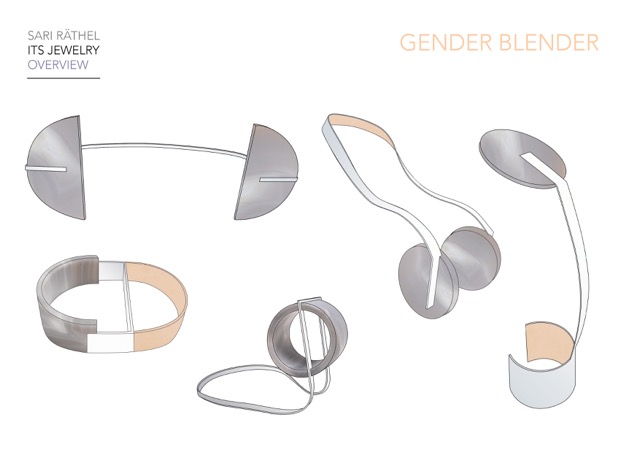 |
| DRAWINGS BY SARI RATHEL |
How was the
ITS experience and what are the opportunities for your future after winning the
contest?
be part of ITS, was a one-of-a-kind experience. I felt so welcome from the
moment I arrived and it just got better and better. Being part of such an
exciting event but also having the chance to meet so many interesting people
was really special.
especially being able to share the success with my friends who won ITS
Accessories, ITS Artwork and the OTB award. To know others really believe in my
work is such a boost. Through the award a lot of people and press are
interested in my work, which will be a massive help towards launching my label.
Award. Representative objects of his tradition and the habitat in which he grew
up have become pieces preserved in plexiglass blocks. Memento.
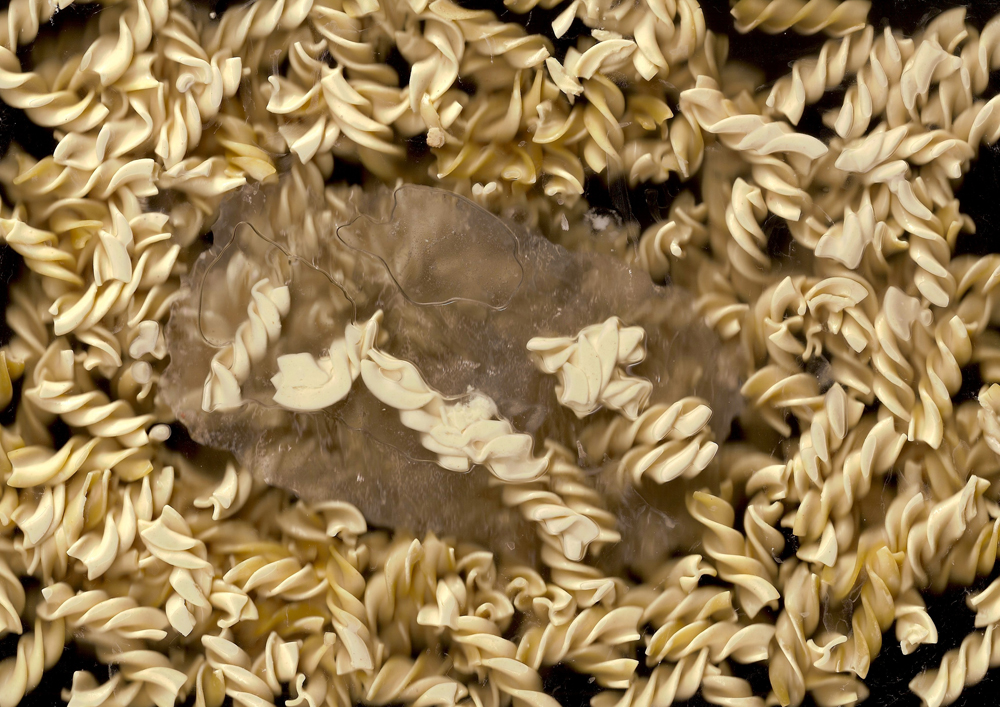 |
| MARCO BAITELLA’S PASTA |
design school path?
Always
be honest. A principle that was repeated several times by my tutors and that has
led me to reflect constantly on the meaning and because of my work, its
peculiarities and the consequent relevance within the system.
In
London in the last two years I’ve worked tirelessly every day, from morning to evening,
in order to make the most of the possibilities that the
College offered me. During the day, in the opening hours, I attended the workshops, I
confronted myself with technicians and learned
the more technical aspects of the work, developing physical prototypes.
In the
evening I’ve always alternated observation, research and planning with minor
manuals activities, basically repetitive, so I could relax and free my mind.
ITS has been developed on the track of the
research around the master collection. The main themes that I investigated are the time and memory.
The object itself represents a thumbnail of my personal vision of Utopia, built
on three time levels on each of which are located visions.
with watch components to suggest the idea of time passing, and finally on the top the completely transparent future. The
Artwork results a kaleidoscope of images that change relative to
the position of the observer.
How was the
ITS experience and what are the opportunities for your future after winning the
contest?
of visibility. Of those three days spent in Trieste I cherish
strong emotions, memories shared with friends old and new as well as an
incredible motivational boost towards the future.
The opportunities are there, I will not stop working on my projects and give
life to my ideas, also I’m looking forward to going back to Trieste next year.
The best is yet to come.
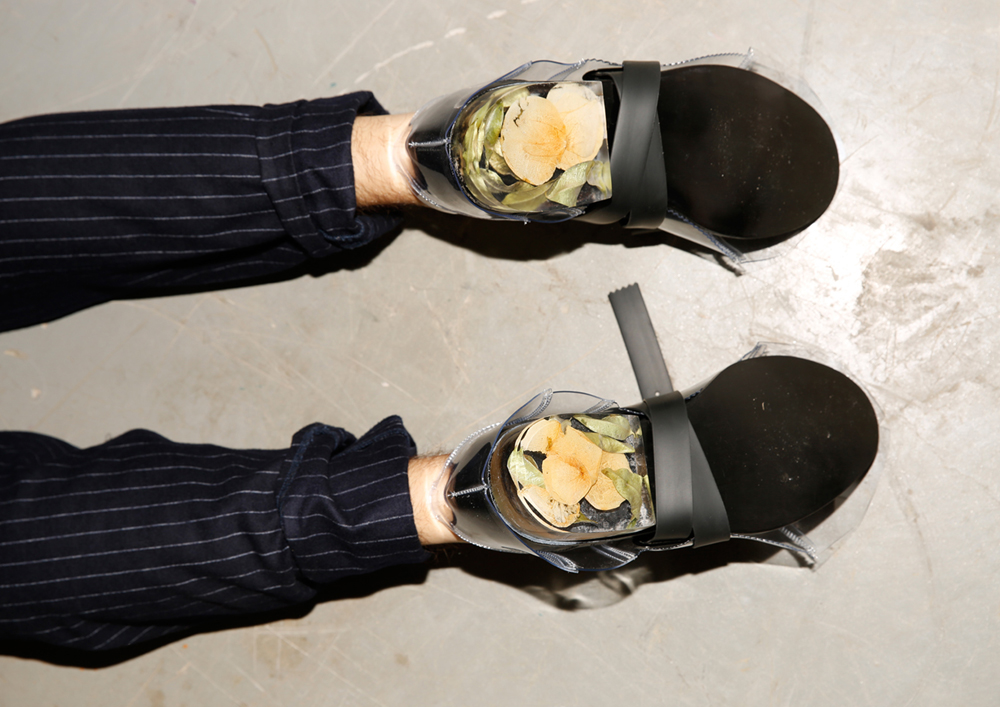 |
| MARCO BAITELLA’S SHOES DETAIL |
ITALIAN VERSION
Quando i sogni diventano realtà! Intervista con i 4 vincitori di ITS Fashion Contest 2016
Hanno messo alla prova la loro
creatività, i loro progetti sono stati scelti tra quasi mille. Scambiamo due
chiacchiere con i 4 vincitori nelle principali categorie di ITS Contest 2016.
ITS (International Talent Support) è diventato negli anni uno dei principali concorsi di moda a livello
mondiale. Alla sua quindicesima edizione, svoltasi a Trieste il 16 luglio
scorso, hanno partecipato ben 41 finalisti (che potete conoscere qui),
provenienti da quasi 200 scuole internazionali o che hanno già un loro marchio
emergente.
Come direbbe Barbara Franchin (ideatrice,
mente e cuore dell’intera organizzazione), ITS è una famiglia. Il concorso,
infatti, è stato ideato per mostrare e supportare la creatività più pura e
libera di giovani designer di moda, accessori e gioielli, senza alcun vincolo o
scopo commerciale.
Quello che è emerso dai progetti presentati è un senso di profondo rinnovamento e il
desiderio comune di ritrovarsi in un futuro migliore, da costruire attraverso
una propria visione chiara e coraggiosa.
nelle categorie ITS Fashion, ITS Accessories, ITS Jewelry e ITS Artwork, tutti
ragazzi giovani e appassionati, disponibili e gentili, a cui abbiamo rivolto le
stesse domande per conoscere meglio il loro background di studi, il modo di
progettare una collezione e di affrontare il lavoro, la loro esperienza ad ITS.
Gli abbiamo anche chiesto come vedono il loro futuro. Noi siamo sicuri che sarà
radioso!
è la vincitrice di ITS Fashion Award con una collezione dominata dalla
leggerezza e raffinatezza, ricca di spunti creativi e citazioni al passato.
vince sia ITS Accessories che l’ambitissimo Vogue Talent Award. Presto vedremo
le sue creazioni, sneakers
rimasterizzate ad arte da vecchie scarpe, sul supplemento cartaceo di Vogue Italia
e sul sito internet del colosso editoriale in uno shooting fotografico a lei
dedicato.
tedesca Sari Rathel, una ragazza gentile e disponibile al dialogo e alla
collaborazione, con il sorriso perennemente dipinto sul volto. I suoi gioielli
hanno forme geometriche semplici ed essenziali, oltrepassano le distinzioni di
genere e si innestano come nuovi elementi nel corpo umano.
veramente italiano tanto da usare la pasta nelle sue creazioni, si è
aggiudicato con il suo estro surreale ed ironico il premio ITS Artwork. Gli
oggetti rappresentativi della sua tradizione e dell’ambiente in cui è cresciuto
sono diventati pezzi da conservare in blocchi di plexiglass. Memento.
del tuo percorso di studi di design?
MAYAKO KANO: La lezione più
importante che ho imparato è che quando ti trovi di fronte ad una scadenza,
devi riuscire a trovare o inventare il modo di affrontarla: essere proattivi con
ogni progetto senza paura di chiedere aiuto o di delegare.
HELEN KIRKUM: Ho imparato tantissimo dai miei tutor e colleghi
durante gli anni in scuole di design. Credo che la cosa più preziosa nelle
scuole di design sia la conversazione. Attraverso il dialogo con amici,
colleghi e tutor, ho imparato come descrivere e difendere i miei progetti, ho
avuto riferimenti preziosi e opinioni. Credo sia importante imparare a
presentare il proprio progetto.
La più potente lezione che ho avuto nel mio
percorso è quella di fidarmi del mio istinto. Ho imparato così tanto su di me,
il mio metodo e il modo di lavorare, che ormai so su quali idee spingere e
quali sono da lasciar andare. Questa lezione è arrivata solo dopo anni di
tentativi ed errori, attraverso quel processo ora ho più fiducia in me stessa e
sono più forte come designer.
di design è l’essere parte di una incredibile
rete in cui è sempre possibile discutere del proprio lavoro con i colleghi e tutor. Mai pensare di sapere tutto, c’è
tanto da imparare ed esplorare.
Per me è stato fondamentale aver fatto uno
stage e avere un lavoro contemporaneamente durante la mia formazione, ma anche
aver fatto collaborazioni extra-curriculari. Mi piace quando il mio lavoro è
interdisciplinare e trova immediata applicazione, ti dà un punto di vista
totalmente diverso su ciò che si fa in studio.
sempre onesto. Un
principio che mi è stato ripetuto più volte dai miei tutors e che mi ha portato
a riflettere costantemente sul senso ed il perché del mio lavoro, le sue peculiarità
e conseguente rilevanza all’interno del sistema.
Com’è la tua tipica giornata di lavoro?
per la giornata che verrà. La mia giornata tipica comporta essere in
comunicazione, direttamente e indirettamente, con modellisti, tagliatori e
sarti.
HELEN KIRKUM: Alla RCA (Royal College of Art)
le giornate erano lunghe e impegnative, ma era l’ambiente ideale in cui vivere
e lavorare. Di solito arrivo in studio presto e passo la maggior parte della
giornata tra pianificazione e lavoro. Sono più produttiva la sera e spesso
lavoro duro per tutta la sera e la notte. I miei compagni di classe ridono
sempre di me quando ho una sferzata di energia intorno a 23:00!
Sono molto alla
mano e spesso molte idee sorgono spontaneamente durante il giorno, per poi
lavorarci durante la notte in modo più pragmatico attraverso la progettazione.
Durante il giorno mi piace lavorare su molti progetti contemporaneamente,
ognuno in varie fasi. Trovo che questo dia un ritmo giocoso e naturale al mio
lavoro e mi permette di continuare a divertirmi nel farlo.
maggior parte dei giorni li passo al mio banco da
lavoro o alla scrivania, ma tutto gli il resto del lavoro che faccio
separatamente dalla mia collezione principale alimenta in realtà il mio
processo di ispirazione e design. La sperimentazione sui materiali è
fondamentale per la realizzazione di ogni pezzo finale. Lavoro a stretto
contatto con il materiale fino a quando sono soddisfatta del risultato.
Comincio con mood boards e lavoro con i prototipi
direttamente sul corpo. Poi li fotografo e uso il collage o disegno su queste
immagini, lavorando istintivamente dentro e fuori il corpo al fine di
perfezionare le mie idee. Anche se ogni giorno è molto diverso dall’altro, sono
tutti molto lunghi, e spero sempre che finiscano con un bella passeggiata in
bicicletta da studio a casa o verso un drink al pub con i miei compagni di
studi.
ultimi due anni ho lavorato instancabilmente ogni giorno, da mattina a sera, per
poter sfruttare al meglio le possibilità che mi offriva il College. Durante la giornata,
negli orari di apertura, ho frequentato i laboratori, mi sono confrontato con i
tecnici e imparato gli aspetti più tecnici del lavoro, sviluppando fisicamente
i prototipi.
Nelle ore serali ho sempre alternato osservazione, ricerca e
pianificazione con attività manuali minori, tendenzialmente ripetitive, per
potermi rilassare e liberare la mente.
per il concorso ITS?
abbraccia l’idea di essere catturati in un limbo tra “vecchi e nuovi” mondi. Prendendo
spunto da oggetti fatti a mano in epoche precedenti, ho cercato di portare la
loro qualità all’interno di un dialogo contemporaneo attraverso la protezione
di stratificazioni traslucide.
HELEN KIRKUM: Il mio progetto indaga sul modo in cui
identifichiamo noi stessi nella nostra realtà iper commerciale, in cui
confusione e il passare del tempo creano un paradigma troppo saturo.
La mia ispirazione nasce guardando il modo in cui interagiamo con l’obsolescenza
programmata nelle società guidate dalle tendenze. Mentre lottiamo per
appartenere e identificarci in questa realtà iper commerciale, la mia opera
rappresenta questi trionfi e sconfitte, i nostri valori e ricordi.
Ho costruito
la mia collezione da vecchie scarpe raccolte nei centri di riciclaggio,
utilizzando la sneaker per simboleggiare il nostro rapporto con i prodotti. Raccogliendo
solo scarpe da ginnastica spaiate che non potevano essere riutilizzate, ho
smembrato con cura tutti i pezzi componenti, per ritrovare la loro forma
originale.
Il processo rivaluta la
costruzione e la produzione delle sneakers, sottolineando la mano dell’artefice
e la bellezza del mestiere, che si è
persa nella fabbricazione globalizzata delle sneakers. Un’interpretazione
meta-moderna del nostro panorama attuale, delle connessioni tra commercio
intensificato e identità sociale.
genere e affrontare argomenti importanti intorno alla
“teoria del genere” attraverso gli oggetti.
I pezzi più grandi sono fatti con
agata, ottone argentato e pelle, e sono tutti ispirati da parti maschili e
femminili del corpo come fianchi, le spalle larghe, i testicoli, i seni e il
pomo d’Adamo. I piccoli pezzi placcati in oro rosa esplorano zone del corpo che
sono modificate esteticamente per adattarsi alle aspettative di genere della
società, come l’ascella, le unghie o il canale
uditivo. Invece di modificarle, le voglio adornare. Con questo progetto voglio
permettere all’utilizzatore di “provare” il proprio genere o di esplorare ciò che potrebbe sentire avendo certe
parti del corpo.
presentato ad ITS é stato sviluppato sulla traccia della ricerca svolta attorno
alla collezione del master. I temi principali che ho indagato sono il tempo e
la memoria. L’oggetto in sé raffigura una miniatura della mia personale visione
di Utopia, costruita su tre livelli temporali su ciascuno dei quali sono
collocate delle visioni.
Il passato alla base con i ricordi della mia infanzia,
il presente al centro riempito con componenti di orologi a suggerire l’idea del
passare del tempo, ed infine sull’estremità il futuro completamente
trasparente. L’Artwork risulta essere un caleidoscopio di immagini che cambiano
rispetto alla posizione di chi osserva.
Com’è stata la tua esperienza ad ITS e quali opportunità si prospettano per il tuo futuro dopo la vittoria?
MAYAKO KANO: Sono ancora presa dal ricordo di ITS. Per
me è stato davvero un sogno diventato realtà. Mi interessa proseguire
questo dialogo e prendere il premio molto seriamente. Desidero stare in
un ambiente che mi permetta di esplorare ulteriormente la mia estetica
mentre lavoro ed imparo dai migliori designer.
HELEN KIRKUM: ITS è stata un’esperienza
inestimabile, un’autentica ispirazione essere circondati da questo genere di persone
così generose. Abbiamo condiviso tanti ricordi e creatività durante tutto
il fine settimana, è stato incredibile incontrare
tante persone ed essere parte della competizione.
Vincere è stata una bella sorpresa finale,
ero così orgogliosa, e mi ha permesso di credere veramente in me stessa, ero
troppo sopraffatta dalla situazione per rendermi conto che così tanti fantastici professionisti del settore hanno creduto nel
mio lavoro. In futuro, spero di incontrare e collaborare con molte delle
incredibili persone che ho incontrato a ITS, e di continuare a crescere e
imparare da tutte queste esperienze.
di essere parte di ITS, è stata un’esperienza unica.
Mi sono sentita molto ben accolta dal momento in cui sono arrivata ed è andata
sempre meglio. Essere parte di un evento così eccitante, ma anche avere la
possibilità di incontrare tante persone interessanti è stato davvero speciale.
Vincere il premio ITS Jewelry è stato un sogno che si avvera, soprattutto
essere in grado di condividere il successo con i miei amici che hanno vinto ITS Accessories, ITS Artwork e il premio OTB.
Conoscere altri che credono
effettivamente nel mio lavoro è stata una vera spinta. Attraverso il premio un sacco di
gente e la stampa si sono interessati al mio
lavoro e questo sarà un aiuto enorme per il lancio del mio marchio.
MARCO BAITELLA: ITS é stata
un’esperienza surreale che mi sta dando tantissima visibilità. Di quei tre giorni
trascorsi a Trieste conservo emozioni fortissime, ricordi condivisi con amici vecchi
e nuovi nonché una spinta motivazionale pazzesca verso il futuro. Le
opportunità ci sono, io non smetterò di lavorare ai miei progetti e dare vita
alle mie idee, inoltre non vedo l’ora sia l’anno prossimo per tornare a
Trieste. Il meglio deve ancora venire.
